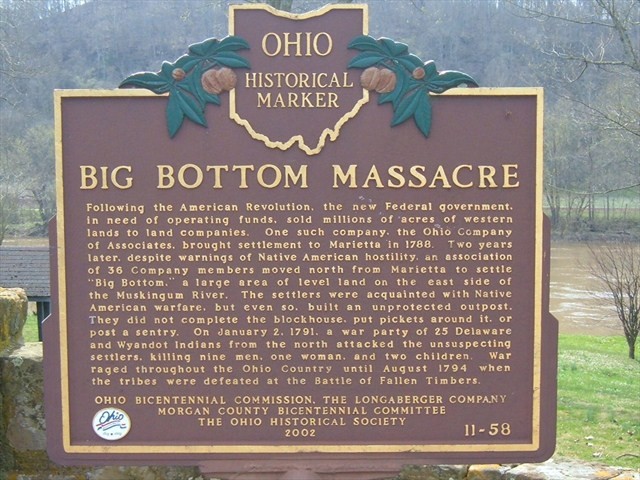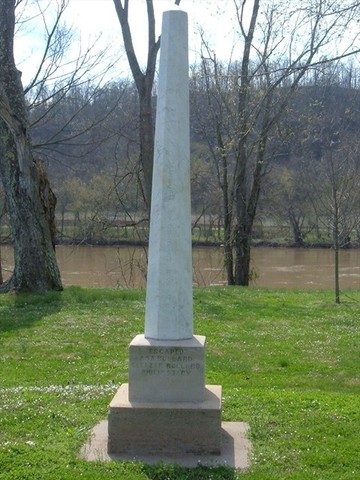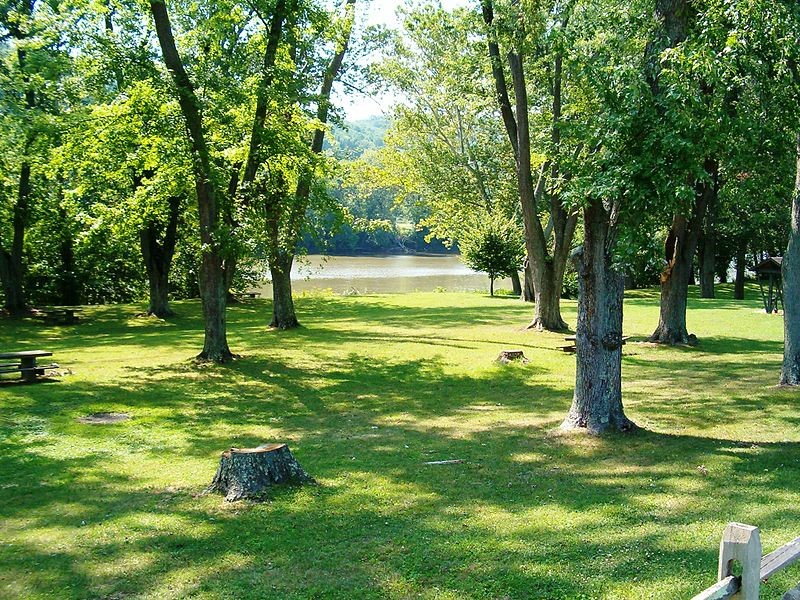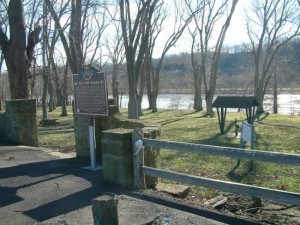Big Bottom State Memorial Park
Introduction
Text-to-speech Audio
The three-acre Big Bottom Park is the site of a skirmish between Ohio Company settlers and Delaware and Wyandot Indians that took place on January 2, 1791. This site was also named for the broad Muskingum flood plain. The Big Bottom Massacre marked the start of four years of bitter warfare in Ohio. The warfare in Ohio ended when the tribal coalition was defeated at the Battle of Fallen Timbers and when General Anthony Wayne and Indian tribes signed the Treaty of Greenville. Today, this site is known as Big Bottom Memorial State Park which possess a 12-foot marble obelisk. It is one of interesting attraction in Morgan County, Ohio
Images
Big Bottom Historical Marker at the Park

Monument on the Big Bottom Park grounds.

Big Bottom Memorial Park

Big Bottom with River View

Backstory and Context
Text-to-speech Audio
After the American Revolution the new American government was in need of money to pay its war debts and needed operating funds. The government sold millions of acres of western lands to land companies. The Ohio Company was one such company that purchased land for settlement around Marietta, Ohio in 1788. In 1790 an association of 36 company members moved north from Marietta to settle the Big Bottom area, a large area of land on the east side of the Muskingum River, despite the warnings of Indian hostility.
Westerners wanted protection from Indians, but funds were low and the Ohio Company refused. Although the settlers were well versed in Indian warfare they built an unprotected outpost. They did not complete the blockhouse, establish pickets around it or posted guards.
On January 2, 1791 a war party of approximately 25 Delaware and Wyandot Indians attacked the settlers at the Big Bottom outpost killing nine men, one woman and two children. This massacre spurred war between the American Government and the Indians around the Ohio territory until August 1794 when the Indian Tribes were defeated at the Battle of Fallen Timbers and the Treaty of Greenville was signed. Following the Big Bottom Massacre, the Ohio Company provided protection for Western settlers beginning in 1792.
Westerners wanted protection from Indians, but funds were low and the Ohio Company refused. Although the settlers were well versed in Indian warfare they built an unprotected outpost. They did not complete the blockhouse, establish pickets around it or posted guards.
On January 2, 1791 a war party of approximately 25 Delaware and Wyandot Indians attacked the settlers at the Big Bottom outpost killing nine men, one woman and two children. This massacre spurred war between the American Government and the Indians around the Ohio territory until August 1794 when the Indian Tribes were defeated at the Battle of Fallen Timbers and the Treaty of Greenville was signed. Following the Big Bottom Massacre, the Ohio Company provided protection for Western settlers beginning in 1792.
Due to thunderstorms and vandalism, the historic site, Big Bottom State Memorial Park has had to be cleaned up. On October 17, 2010, this park was rededicated by the Ohio Historical Society. It is now used for picnics, outdoor activities and historic site tours.
Sources
"Big Bottom Memorial Park." Home. N.p., n.d. Web. 28 Oct. 2014.
"Big Bottom Massacre." Wikipedia. Wikimedia Foundation, 24 Oct. 2014. Web. 28 Oct. 2014.
"Big Bottom Memorial State Park." Visit Morgan County Ohio Big Bottom Memorial State Park Comments. N.p., n.d. Web. 28 Oct. 2014.
"My Profile." Big Bottom Memorial Park. N.p., n.d. Web. 28 Oct. 2014.
